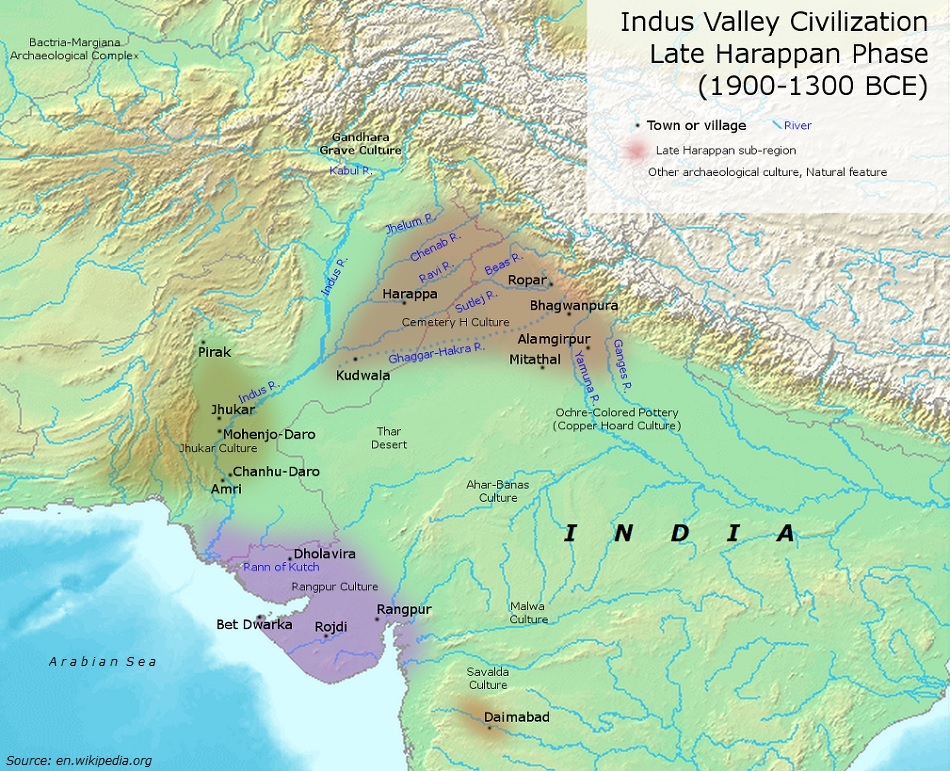
- Ancient Indian History - Home
- Study of Indian History
- Writing of Ancient Indian History
- Imperialist Historiography
- Historiography Nationalist Approach
- Marxist School of History
- Sources of Ancient Indian History
- Archaeological Sources
- Geographical Background
- Geography in Ancient Literature
- Stone Age Cultures
- Mesolithic Culture
- The Neolithic Age
- Chalcolithic Period of India
- Chalcolithic Culture In India
- Harappan Civilization
- Harappan Town Planning
- Harappan Crafts & Industries
- Harappan Culture
- Harappan Religion
- Harappan Chronology
- Vedic Civilization
- Vedic Society
- Vedic Politics
- Vedic Religion & Philosophy
- The Aryan Invasion
- Later Vedic Age
- Social System after Vedic Age
- Achievements of Indian Philosophy
- Evolution of Jainism
- Evolution of Buddhism
- Alexander’s Campaign in India
- Maurya Dynasty
- Kalinga War & its Impact
- Society & Economy during Mauryas
- Mauryan Governance
- Early History of South India
- Age of Smaller Dynasties
- Literature of Satavahana Period
- Society of Satavahana Period
- Economy of Satavahana Period
- Technology of Satavahana Period
- Chola Dynasty
- Pandya Dynasty
- Chera Dynasty
- Period of Foreign Invaders
- Gupta Period
- Decline of Guptas
- Governance of Gupta Period
- Literature of Gupta Period
- Economy in Gupta Period
- Science & Tech of Gupta Period
- India after the Gupta Period
- Period of Harsha
- South India during the Harsha Period
- Kadamba Dynasty
- History of Kamarupa
- India after Harsha
- Gurjara Pratiharas
- Palas of Bengal
- Rashtrakutas of Deccan
- Literature after the Harsha Period
- Society after the Harsha Period
- Economy after the Harsha Period
- Religion after the Harsha Period
- References & Disclaimer
Ancient Indian History - Harappan Civilization
Till 1920, the relics of the civilization were found only in the Indus valley region; therefore, it was known as the Indus civilization.
In 1920-21, the Harappan civilization was discovered in the excavations by D. R. Salini (at Harappa) and by R. D. Banerjee (at Mohenjo Daro).
The remains of the civilization were first noticed at Harappa, therefore it is also known as the Harappan civilization.
Geographical Facts
Following are the important geographical facts of distribution of Harappan civilization −

The 1,400 settlements of this civilization discovered so far are distributed over a very wide geographical area covering almost 1,600 km (east to west) and 1,400 km (north to south).
-
Harappan civilization extent starts from −
Sutkagendor (Baluchistan) in the west to Alamgirpur (Meerut, Uttar Pradesh) in the east and
Manda (Akhnoor District, Jammu and Kashmir) in the north to Daimabad (Ahmadnagar District, Maharashtra) in the south.
About 1,400 settlements of the Harappan culture are known from different parts of India. About 925 settlements sites are now in India and 475 are in Pakistan.
The total geographical stretch of Harappan civilization is about 1,250,000 sq. km which is more than 20 times of the area of Egyptian and more than 12 times of the combined area of Egyptian and Mesopotamian civilizations.
-
Mostly, the Harappan settlements were located on river banks of which −
Only 40 settlements were located on the Indus and its tributaries;
As many as 1,100 (80%) settlements were located on the vast plain between the Indus and the Ganga, comprising mainly the Saraswati river system (which no more exist);
About 250 settlements were found in India beyond the Saraswati River system; a number of them were located in Gujarat, and a few in Maharashtra.
The distribution pattern of settlements shows that the focus of Harappan civilization was not the Indus, but the Saraswati River and its tributaries, which flowed between the Indus and the Ganga. Therefore, few researchers prefer to call it as Saraswati civilization or Indus-Saraswati civilization
-
The settlements belonging to this civilization can be classified as
Small villages (which were up to 10 hectares),
Larger towns and small cities (10 to 50 hectares).
-
Large cities settlements such as −
Mohenjo Daro (+250 hectares),
Harappa (+150 hectares),
Ganawariwala (+80 hectares),
Rakhigarhi (+80 hectares),
Kalibangan (+100 hectares), and
Dholavira (+100 hectares).
Large cities were surrounded by vast agricultural lands, rivers, and forest that were inhabited by scattered farming and pastoral communities and bands of hunters and food-gatherers.
Excavations at the sites of Mohenjo Daro, Harappa, Kalibangan, Lothal, Surkotada, Dholavira, etc. have given us a fair idea about the various aspects such as town planning, economy, technology, religion, etc. of this civilization.